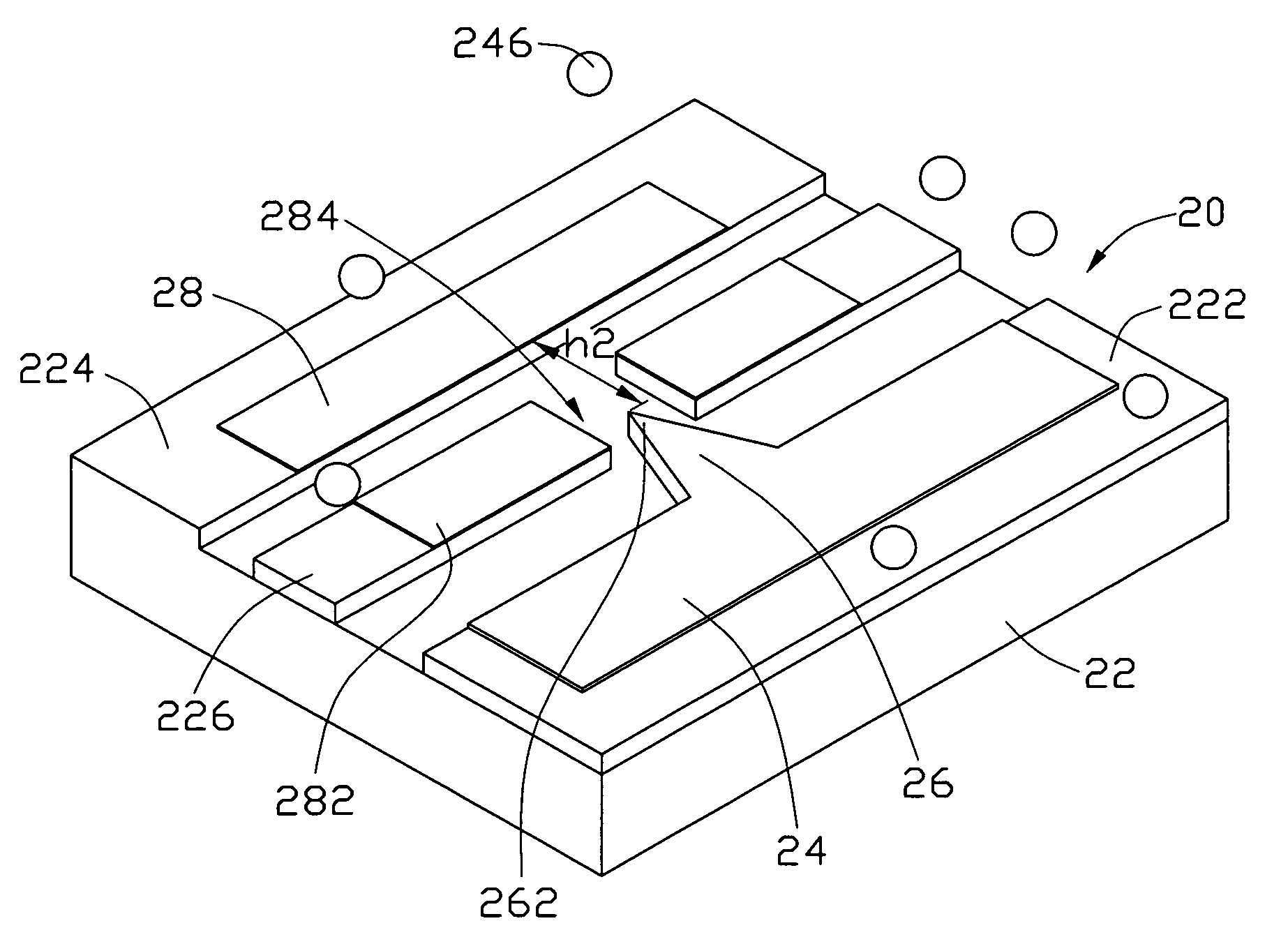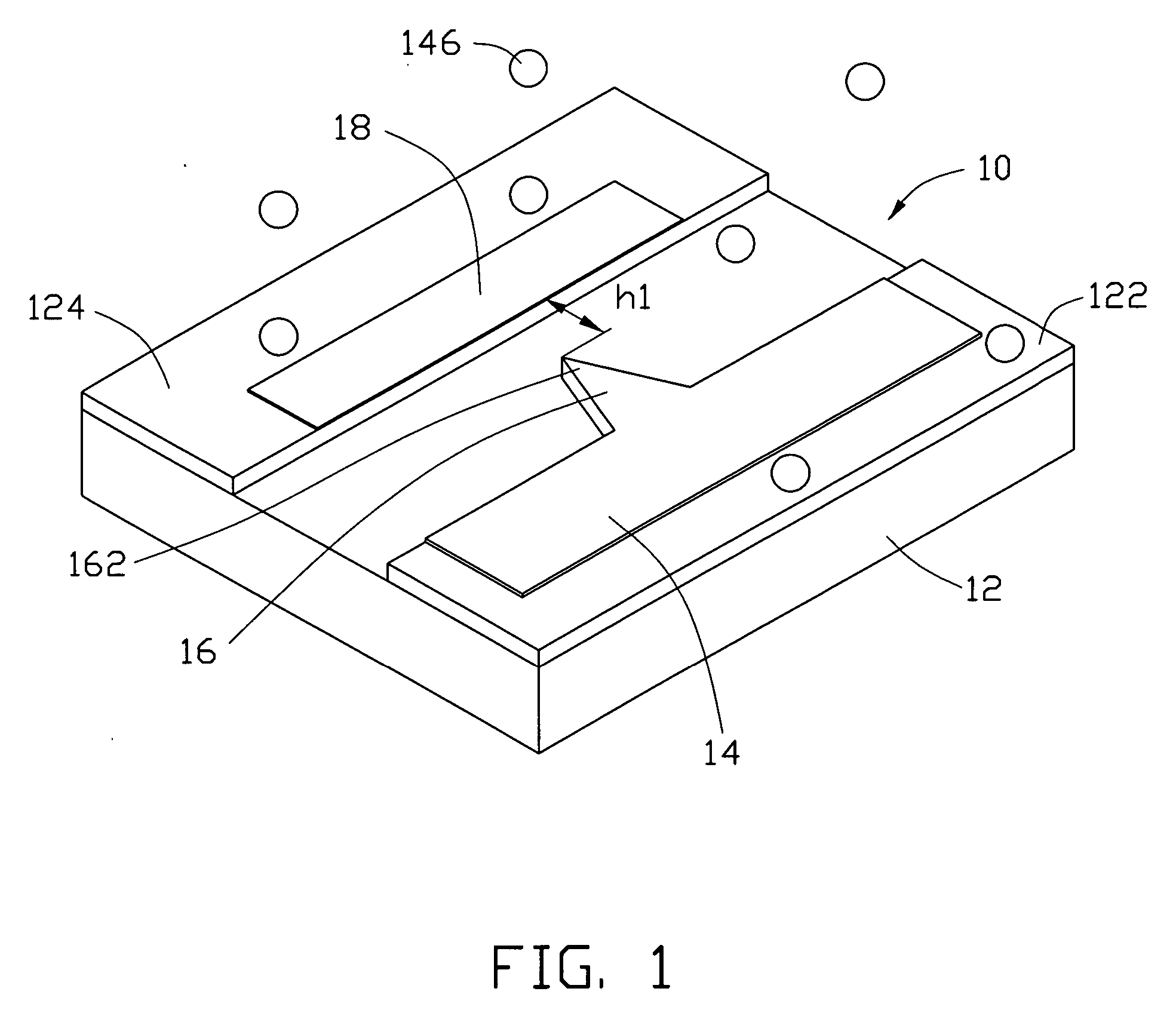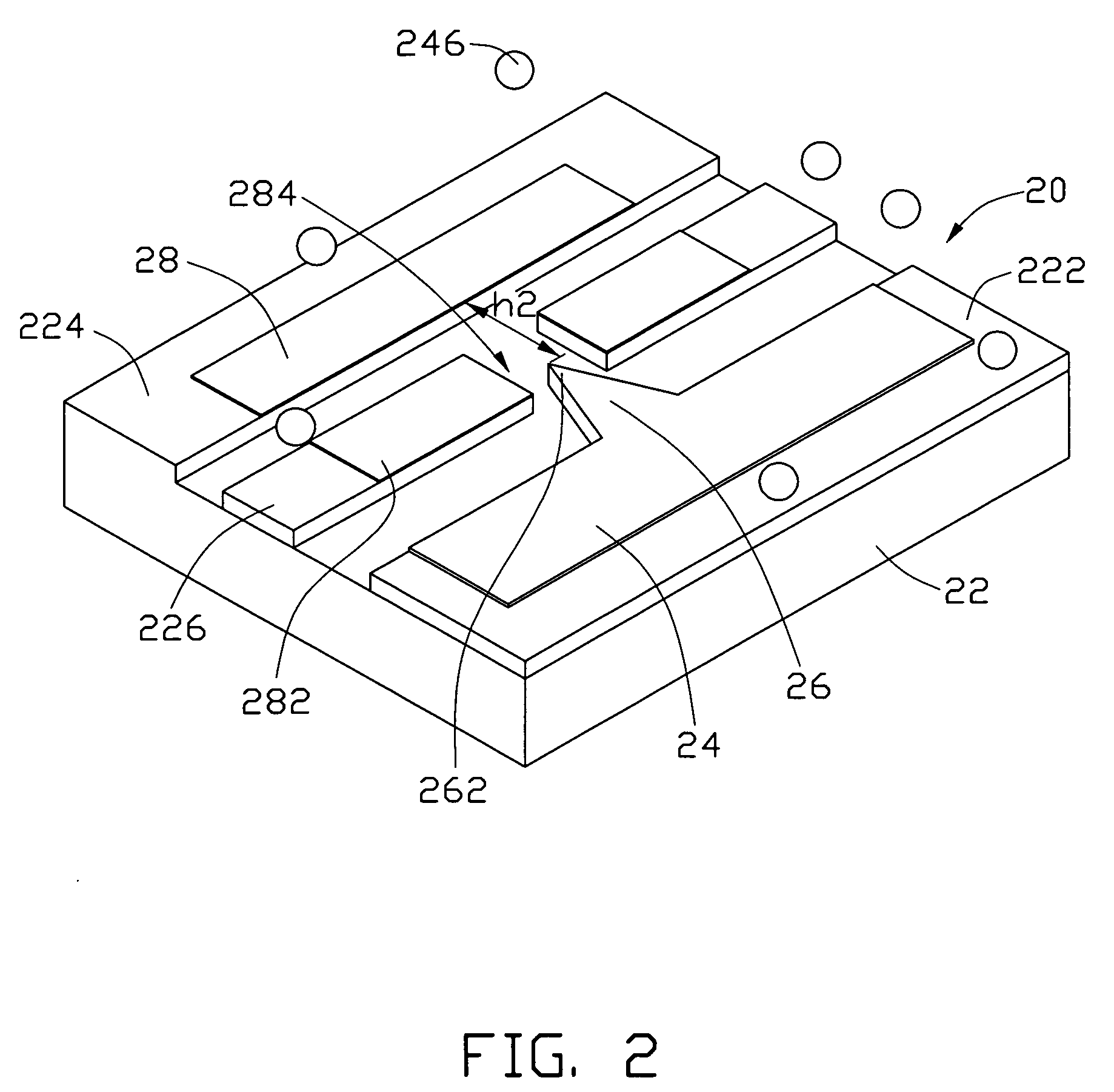Field emission microelectronic device
a microelectronic device and field emission technology, applied in the direction of discharge tube/lamp details, discharge tube luminescnet screen, discharge tube main electrode, etc., can solve the problems of unstable and even potentially damaged transistor performance, and large bulk and weight of conventional vacuum tubes
- Summary
- Abstract
- Description
- Claims
- Application Information
AI Technical Summary
Benefits of technology
Problems solved by technology
Method used
Image
Examples
first embodiment
[0019]FIG. 1 shows a nano-scaled field emission electronic device 10, in accordance with the present device. As shown in FIG. 1, the nano-scaled field emission electronic device 10 is a thin-film bipolar structure and includes a substrate 12, a first insulating layer 122, a second insulating layer 124, a film of cathode electrode 14, and a film of anode electrode 18. The first insulating layer 122 and the second insulating layer 124 are respectively positioned (i.e., essentially directly deposited, which is intended to incorporate both direct attachment thereof or attachment via one or more thin, adhesion-promotion layers) on the substrate 12 and spaced from each other. The cathode electrode 14 is positioned (i.e., essentially directly deposited) on the first insulating layer 122 and has an emitter 16. The emitter 16 extends beyond the first insulating layer 122, such that a free gap exists between the emitter 16 and the substrate 12, the gap promoting free operation of the emitter ...
second embodiment
[0032] Referring to FIG. 2, a nano-scaled field emission electronic device 20 in accordance with the present device, is shown. The nano-scaled field emission electronic device 20 is a thin-film triode structure and includes a substrate 22, a first insulating layer 222, a second insulating layer 224, a third insulating layer 226, a film of cathode electrode 24, a film of grid electrode 282 and a film of anode electrode 28. The first insulating layer 222 and the second insulating layer 224 are positioned on the substrate 22 and spaced from each other. The third insulating layer 226 is positioned on the substrate 22 and spaced between the first insulating layer 222 and the second insulating layer 224. The cathode electrode 24 is positioned on the first insulating layer 222 and has an emitter 26. The emitter 26 has an emission tip 262, and the emission tip 262 faces the anode electrode 28. The anode electrode 28 is positioned on the second insulating layer 224 and apart (i.e., spaced) f...
third embodiment
[0034] Referring to FIG. 3, a nano-scaled field emission electronic device 30, in accordance with the present device, is shown. The nano-scaled field emission electronic device 30 is a thin-film triode structure and includes a substrate 22, a first insulating layer 322, a second insulating layer 324, a third insulating layer 326, a film of cathode electrode 34, a film of grid electrode 382 and a film of anode electrode 38. The first insulating layer 322 and the second insulating layer 324 are positioned on the substrate 32 and spaced from each other. The third insulating layer 326 is positioned on the substrate 32 and spaced between the first insulating layer 322 and the second insulating layer 324. The cathode electrode 34 is positioned on the first insulating layer 322 and has an emitter 36. The emitter 36 has an emission tip 362, and the emission tip 362 faces the anode electrode 38. The anode electrode 38 is positioned on the second insulating layer 324 and apart from the cathod...
PUM
 Login to View More
Login to View More Abstract
Description
Claims
Application Information
 Login to View More
Login to View More - R&D
- Intellectual Property
- Life Sciences
- Materials
- Tech Scout
- Unparalleled Data Quality
- Higher Quality Content
- 60% Fewer Hallucinations
Browse by: Latest US Patents, China's latest patents, Technical Efficacy Thesaurus, Application Domain, Technology Topic, Popular Technical Reports.
© 2025 PatSnap. All rights reserved.Legal|Privacy policy|Modern Slavery Act Transparency Statement|Sitemap|About US| Contact US: help@patsnap.com



